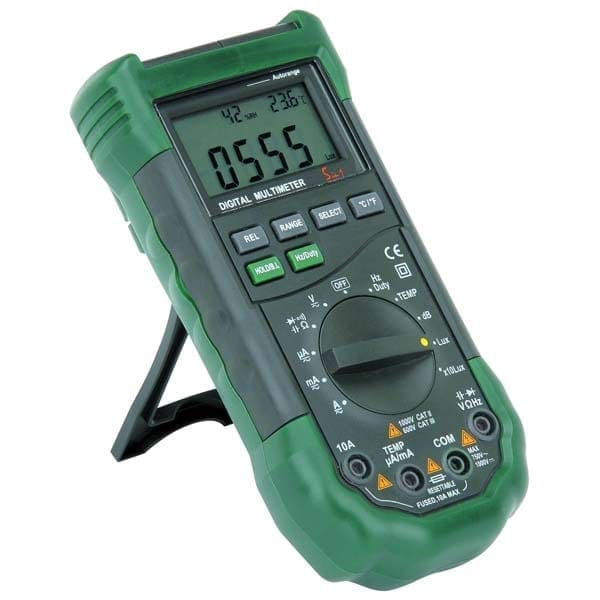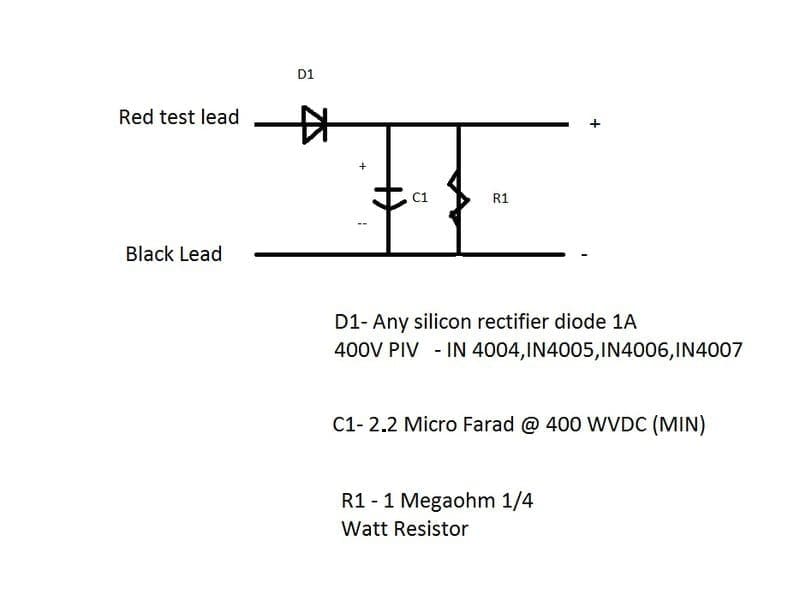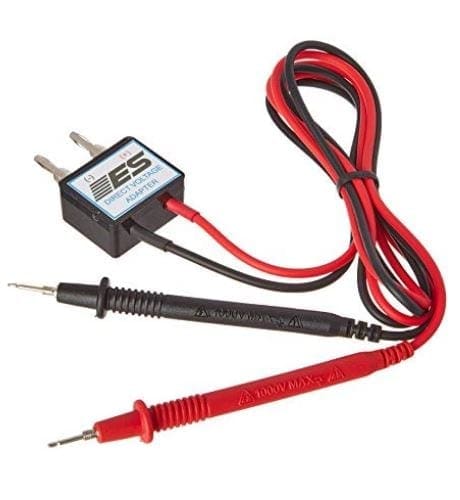Home › Forum › Ask A Member › Advice on a DVA Peak Voltage Meter
- This topic has 12 replies, 6 voices, and was last updated 5 years, 9 months ago by
 frankr.
frankr.
-
AuthorPosts
-
September 10, 2019 at 10:31 am #182997
I am looking for advice in preparation to purchase of a good DVA (Peak Voltage) meter….so I am able to properly test stators and switchboxes and the like. I currently have a Harbor Freight P98674 DVM. Perhaps I can add a DVA adapter to this or maybe I need to get a different meter with the feature built in. I would appreciate knowing what you use….and/or what you would recommend.
Thanks, Chuck
September 10, 2019 at 11:35 am #183003Being old school, I never owned one back in the days when I was twirling wrenches for a living—-nor did any one else. But in more modern days things are better now. Anyhoo, I still don’t own a “real” one, but I did cobble up an adapter. The actual parts cost less than a buck, plus however fancy you want to get as far as a case, test leads, etc. The circuit floats all over the Internet. Here is one version. I will say that people go nuts over the capacitor, tending to use one that is way too big. The one I used is only 0.2 ufd and it works for me.
-
This reply was modified 5 years, 9 months ago by
 Mumbles.
Mumbles.
September 11, 2019 at 1:33 am #183043I recently purchased this DVA adapter to use with one of my multimeters and I believe it max’s out at 400 volts which is enough for any CD ignition components I ever work on. I still haven’t used it so I can’t really say much about it except it was a cheaper way to go instead of buying a peak reading voltmeter.
https://www.amazon.ca/gp/product/B0093U3TFG/ref=ppx_yo_dt_b_asin_title_o05_s00?ie=UTF8&psc=1
September 11, 2019 at 4:37 am #183045My only question is since it plugs into the “COM” and “DCV” jacks on your multimeter, is there a standard spacing between the jacks?
September 11, 2019 at 7:31 am #183049just a question …
if PEAK Voltage is = AC + xx % can’t we just assume that any AC reading + xx% is good enough to estimate the peak value ?
Joining AOMCI has priviledges 🙂
September 11, 2019 at 8:38 am #183053One would think so, but it isn’t that simple. Depending on what you are testing, it may not be an AC sine wave (trigger sensors). Or you may be testing DC pulses (power pack output) etc, etc, etc
September 11, 2019 at 9:40 am #183058I am also old school too! I don’t understand why you are looking at peek voltage. On small engines the faster it spins the higher the voltage. At one time high speed motors with lights would spin so fast that all lights hooked to it would burn out. Modern regulators cured that.
So keep your peek voltage high enough to make spark, that should work!dale
September 11, 2019 at 10:31 am #183064Being old school, I never owned one back in the days when I was twirling wrenches for a living—-nor did any one else. But in more modern days things are better now. Anyhoo, I still don’t own a “real” one, but I did cobble up an adapter. The actual parts cost less than a buck, plus however fancy you want to get as far as a case, test leads, etc. The circuit floats all over the Internet. Here is one version. I will say that people go nuts over the capacitor, tending to use one that is way too big. The one I used is only 0.2 ufd and it works for me.
Frank I made one too; I even think it works but I don’t really have all that much confidence in it so I thought it might be time to buy a commercially made one that people can vouch for.
And; yes….I hope the spacing is standard. I doubt it is though….one of the vendors for these seems to offer a special version for Fluke meters….and I bet that is because the spacing on theirs is different from what else is commonly used. They probably do that on purpose LOL…..
Chuck-
This reply was modified 5 years, 9 months ago by
 seakaye12.
seakaye12.
September 11, 2019 at 10:34 am #183065I am also old school too! I don’t understand why you are looking at peek voltage. On small engines the faster it spins the higher the voltage. At one time high speed motors with lights would spin so fast that all lights hooked to it would burn out. Modern regulators cured that.
So keep your peek voltage high enough to make spark, that should work!dale
Dale I think you are essentially correct but it is a diagnostic thing. If you don’t have spark you need to track back through the maze of $350.00 switchboxes and triggers and stators in an effort to identify positively which part is causing the problem. Otherwise you end up throwing expensive parts at it
ChuckSeptember 11, 2019 at 10:37 am #183066The Direct Voltage Adapter is used in conjunction with a multimeter for testing CD (Capacitor Discharge) ignition components, not points style magnetos as found in older motors. Specific values for stator and charge coil output are given in shop manuals along with values for testing ignition and trigger coils etc at both static and cranking/idling speeds. Testing CD ignition components individually helps to narrow down which component is at fault and eliminates the guesswork. I can already see the DVA coming in handy on the Merc/Mariner CD ignitions with the troublesome switch boxes.
-
This reply was modified 5 years, 9 months ago by
-
AuthorPosts
- You must be logged in to reply to this topic.




